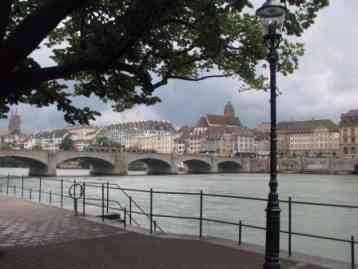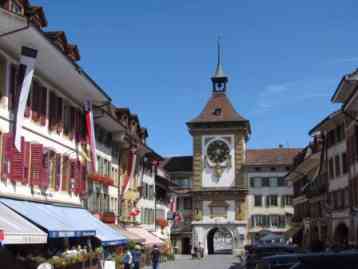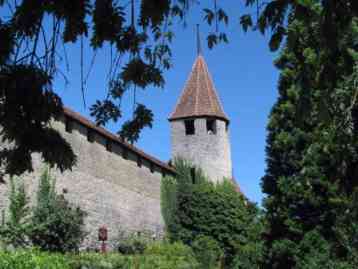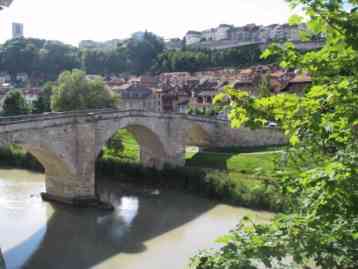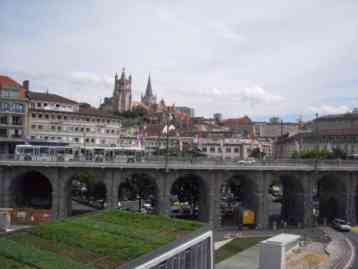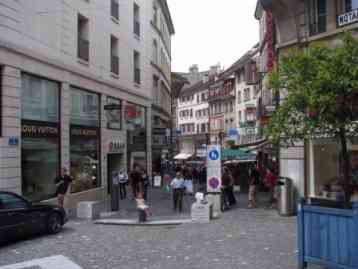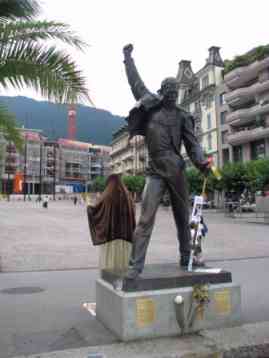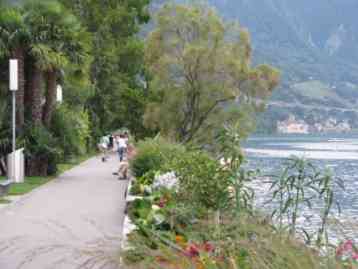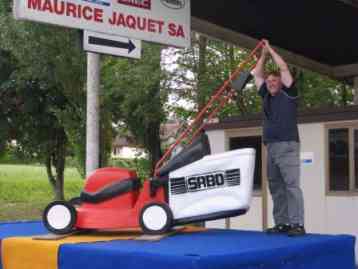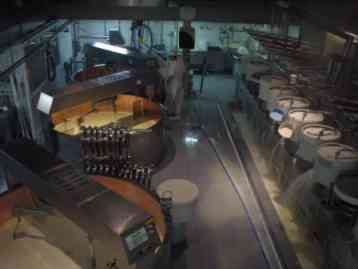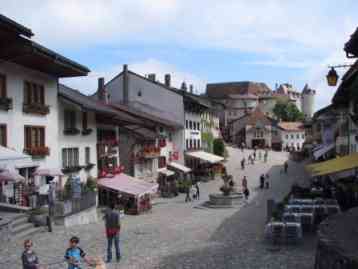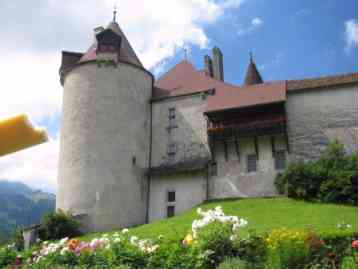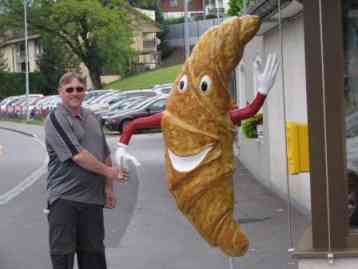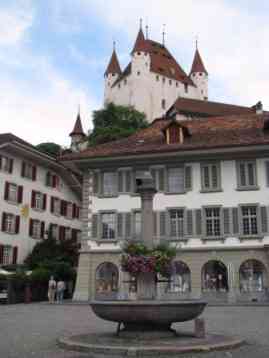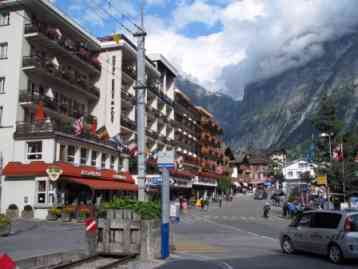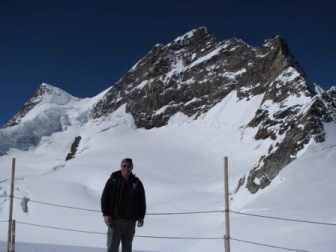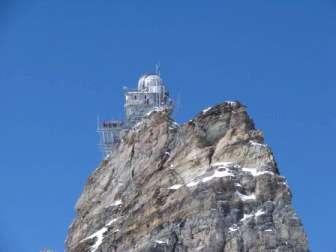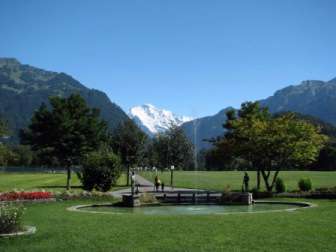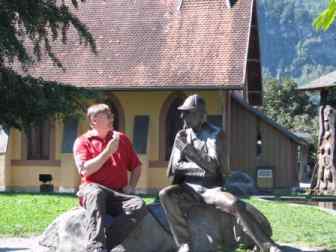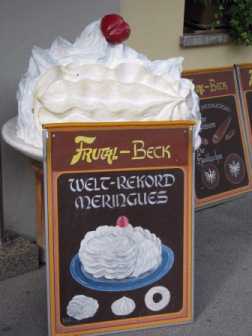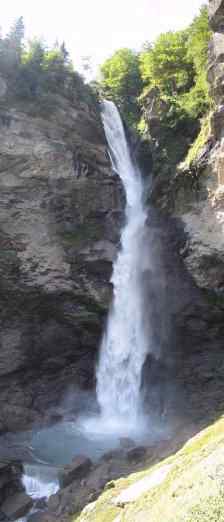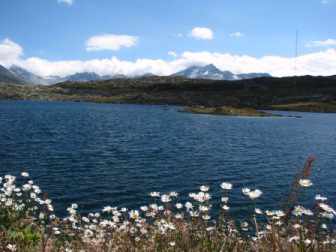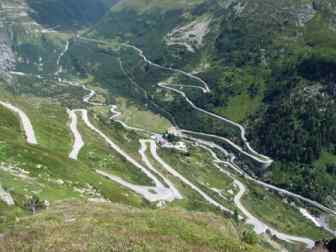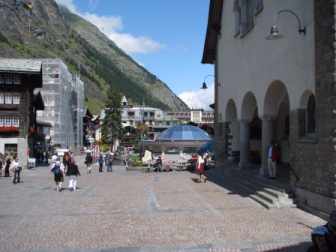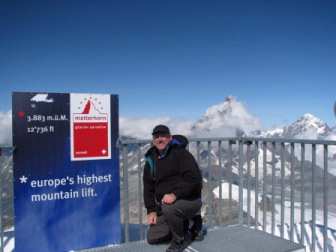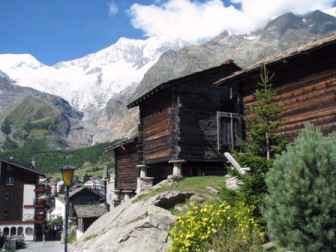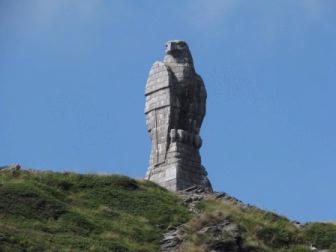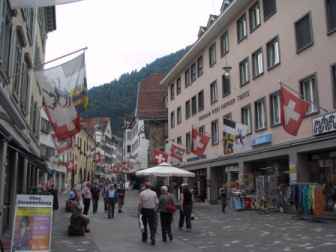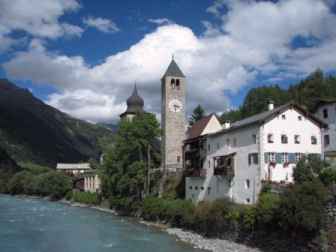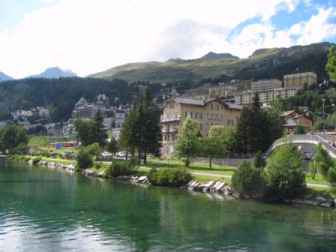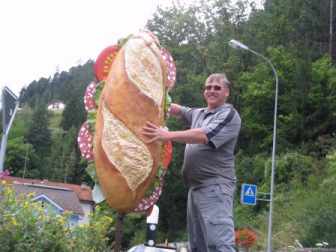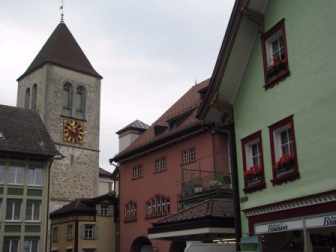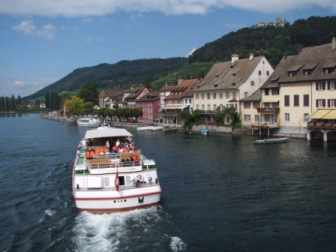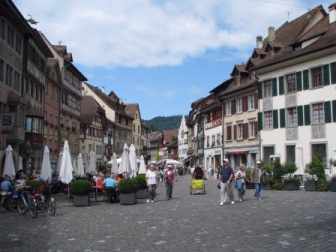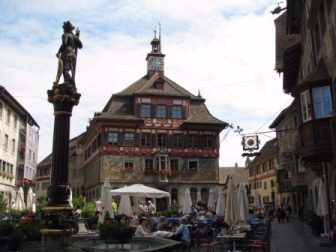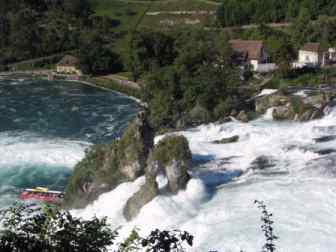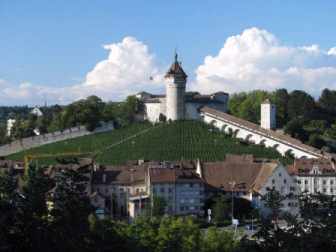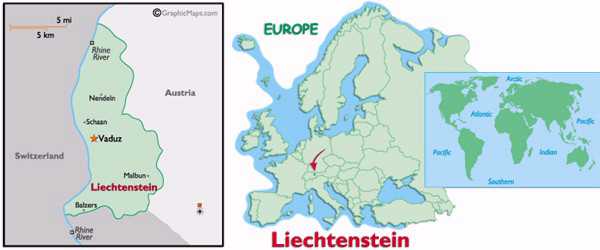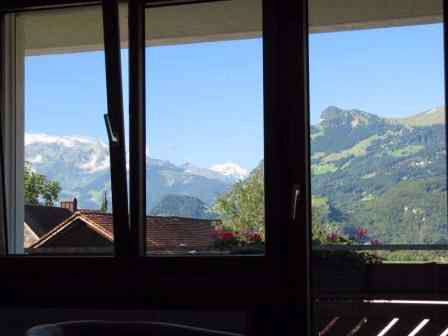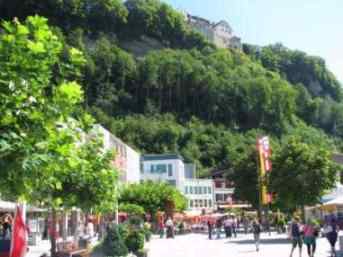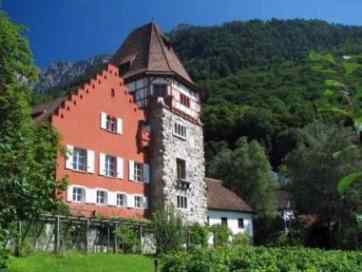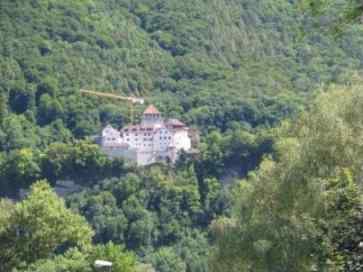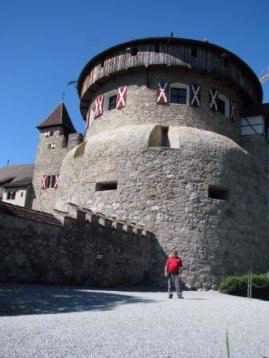In August 2008 I flew to Switzerland for almost 3 weeks. Based on past trips, normally with that much time 3, 4, 5, or more countries would be covered. While it is true I did spend 2 nights in France, 2 nights in Germany, and part of a day in Italy, I’m not counting that since the focus was Switzerland (and Liechtenstein which is virtually Switzerland). Since the other trips to Switzerland were not in the summer, the plan was to see Switzerland in the summer. That was the plan.
One nice thing about visiting just Switzerland, it fit on side-by-side pages in the atlas. Well, there were a lot of other things nice about Switzerland too. Even though I would be seeing a couple things again, since I had been to Geneva, Zurich, and Luzern already and spent quite a bit of time there, I didn't think I would get back to them this trip. Mission accomplished.
I started out in Basel, right near the Germany and France border. Despite being the 3rd largest Swiss city, it has a good layout to walk around and a very nice Old Town. I kept to the west side of Switzerland and saw a number of towns that had spectacular medieval type walls and buildings. These included Murten, Estavayer-le-lac, Fribourg, and Grandson. As you can tell, I was a bit off the beaten path but how else do you really get to see a country.
Heading a little further southwest took me to Lausanne (not to be confused with Luzern, where I went to eventually). The city is very industrious, so getting down to the wharf on the water along Lac Léman to the township of Ouchy was a nice break from the city. Continuing along the Lac takes you to Montreux, someplace you have to go but don't necessarily need to. Not far from Montreux is the town of Gruyère. If you don’t know it, Gruyère is a type of cheese that I like and it tastes phenomenal. It was really neat being in the town where this cheese was made, seeing the Château de Gruyères, and touring the Maison du Gruyère (the fromagerie where it is actually made - free samples!). This really was a highlight of the trip and I spent an entire day here despite the town being so small.
At some point during the trip you knew it had to happen. Yes, I actually went into the Swiss Alps. So far, everything I had seen was just at the foothills. Using Interlaken as a base, you take several trains to the Jungfrau (Top of Europe). The trains go from the Interlaken Ost train station to Lauterbrunnen, then to Kleine Scheidegg, and then they make 2 quick stops for scenic views before reaching the final destination of the Jungfraujoch. On the return you take a slightly different route and stop at Grindelwald before arriving back at the Interlaken Ost station. This is an all day excursion from about 7am to around 6pm. I took extra time the next day and drove back to Grindelwald to walk around and soak in the views. Also near here is the town of Mürren, which required a cable car ride from Lauterbrunnen to get to. All of these little towns have spectacular views and are very Swiss in nature.
Ah, The Matterhorn. Zermatt is the main town related to getting to, or seeing, The Matterhorn. You have to park 6 miles away in Täsch and take a train since Zermatt is a ‘car-free’ zone. Despite no 'cars' allowed, it was a very hectic place. To accommodate all the tourists they use other transportation methods that make cars look appealing. On all the streets, pedestrians are walking. Also, running wildly in the streets are all these electric vehicles. They use them for cabs, deliveries, police, garbage pick-up, you name it. Zermatt is a real city that won’t admit it. The biggest problem is that these ‘non-cars’ are all over the ‘non-roads’. There are no lines or pavement markings so they zip in, out, and around pedestrians with no regard for where they are going and no real pedestrian only zones. Crazy. At least the cars would follow standard rules of the road. By the way, did I forget to mention all the bicycles and horse carriages in Zermatt? My recommendation, see The Matterhorn from the Italian side or just go to Saas Fee.
Not far from Zermatt is the town of Saas Fee. Now this town is much nicer and actually has more spectacular Swiss Alp views (minus The Matterhorn). Saas Fee is also ‘car-free’, and lives more up to this claim. You park just outside of town and easily walk to this quaint town. Where Zermatt only has The Matterhorn, Saas Fee is at the heart of a circle of mountains called the Mischabel, 13 of which are more than 13,120 ft. This includes The Dom at 14,908 ft, the highest Alp in Switzerland. The town is deep in a valley and you are just surrounded by Alps. It makes you want to just twirl around like in ‘The Sound of Music’, sorry, wrong country. In the same general area is Simplon Pass (6,593 ft). It is a spectacular drive and a great way to get to Italy.
On the eastern side of Switzerland are a couple cities of note. Chur is Switzerland’s oldest continuous settlement north of the Alps. While evidence dates it back to 11,000 B.C., there are more recent sites you can see. The Rathaus (Town Hall) dates from 1464, as well as a couple churches from 1491 and 1272. On the other hand is St. Moritz. St. Moritz by name, glitz by reputation. Another one of those places you go to be seen and can say you have seen. Beyond that, not much more.
Rounding out Switzerland to the north were a couple towns that had some ‘Swiss-ness’ (with a hint of ‘German-ness’ thrown in, they are very close to Germany), Stein am Rhein and Schaffhausen. Stein am Rhein is a nearly perfectly preserved medieval village on the Rhine River. The Rathausplatz (Town Hall Square) and main street, Unterstadt, have a row of ornate buildings from around 1540 that makes you stop and look (without the twirling) at each one to see all the detail. Near Schaffhausen (in Neuhausen am Rheinfall actually) is a great view of Rheinfall, which is 492 ft wide and drops 82 feet in a series of 3 falls. Schaffhausen has a very nice old town to walk in, all topped with the spectacular Munot. This rampart structure was built in 1585 on the hill over looking the town as a fortress to defend the city.
The Fürstentum Liechtenstein (Principality of Liechtenstein), formed in 1719 is only 59 square miles (the fourth smallest country of Europe, after Vatican City, Monaco, and San Marino). While it does have 32,000 people and one of the world’s highest per-capita incomes, there are a lot of tourists that come just because it is so small (count me in). In the capital city of Vaduz, the pedestrian zone is at the base of the Vaduz Castle and has a lot of tourist shops. That is part of the fun, to see people from all over converging into one spot. There are several other towns in Liechtenstein, but Vaduz draws the crowds. I took the mini-train tour around the mini-capital, had my passport stamped at the mini-tourist office, and bought a couple mini-shirts (OK, you caught me, more like extra large). It’s still neat to go there.
People always asked ‘Where are you going next?’ and there seemed to always be an answer. I never realized we were always a couple years away in our plans. Despite the trips seeming to come up so quickly, we always had fun. This was the last trip Sharon and I had planned together, Switzerland in the summer. That was the plan.
I guess I’m really on my own now...


